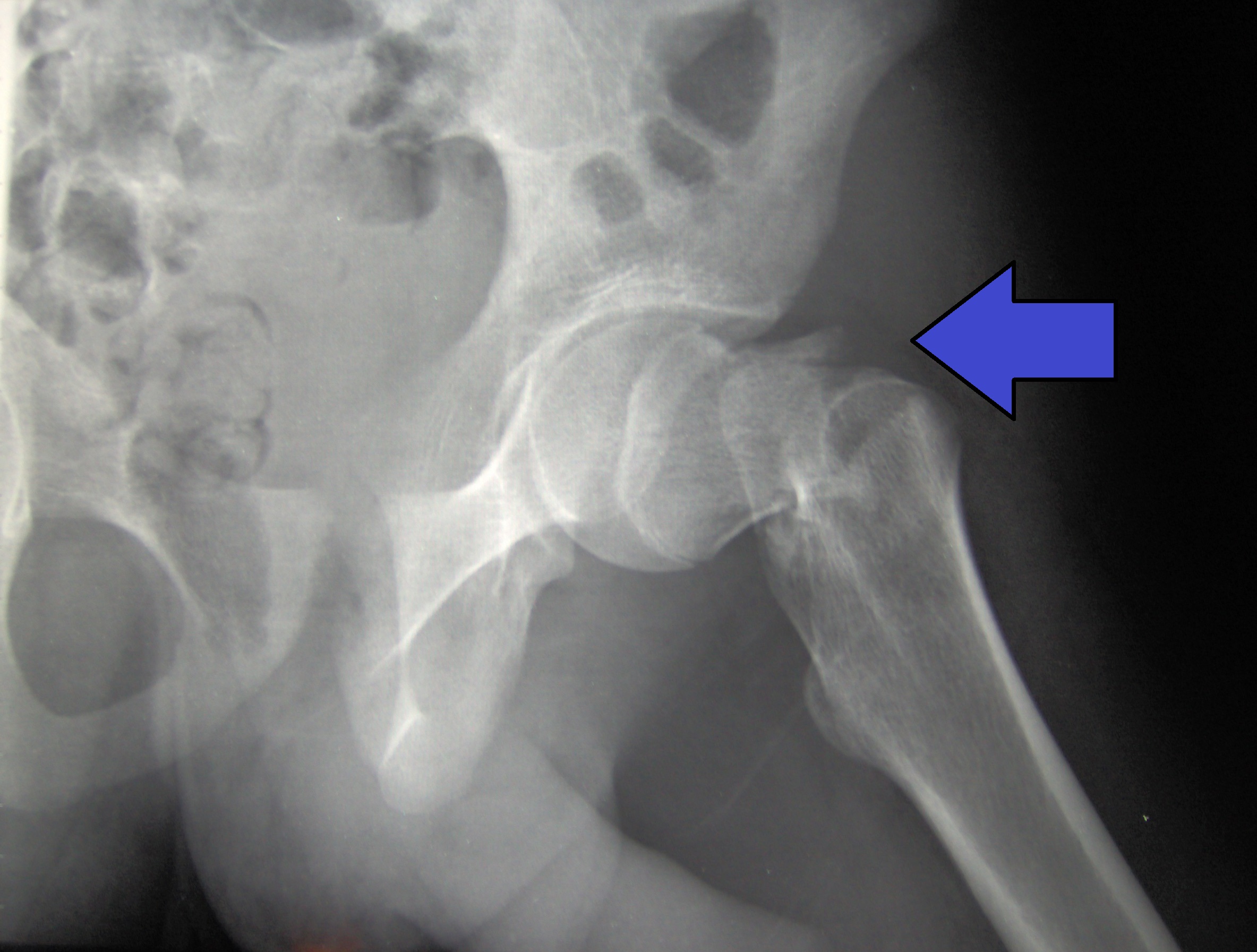A hip fracture is a fracture in the femur (the long bone running through the thigh), near the hip.
Hip fracture usually results from a fall by someone with bones that have been weakend by osteoporosis. Hip fractures in people with normal bone are usually the result of high-energy trauma such as car or bicycling accidents.
Hip fractures are serious injuries, especially for elderly and frail patients. The pain and immobility caused by a hip fracture increases the risk of pressure sores, blood clots (deep vein thromboses, DVTs) and pneumonia. The outcome of untreated hip fractures is very poor.
Types of Hip Fractures
The general term "hip fracture" refers to several different types of fractures.
- Femoral head fracture denotes a fracture involving the femoral head. This is usually the result of high energy trauma and a dislocation of the hip joint often accompanies this fracture.
- Femoral neck fracture. Also referred to as subcapital, or intracapsular fracture
- Subtrochanteric fracture actually involves the shaft of the femur immediately below the lesser trochanter and may extend down the shaft of the femur.
Signs & Symptoms of Hip Fracture
The classic story of a hip fracture is of an elderly patient who experiences hip or leg pain and is unable to stand following a fall.
On examination, the leg on the painful side is often shortened and the knee is rotated outward compared to the unaffected leg.
 Diagnosis of Hip Fracture
Diagnosis of Hip Fracture
X-rays of the affected hip usually make the diagnosis of hip fracture.
In situations where a hip fracture is suspected but not obvious on x-ray, an MRI or bone scan may be ordered.
Treatment of Hip Fracture
Most hip fractures are treated with surgery.
The surgery can be a major stress, particularly for the elderly. Pain is significant, forcing the patient to remain immobilized. Since prolonged immobilization can be more of a health risk than the surgery itself, patients are encouraged to become mobile as soon as possible after surgery.
Rehabilitation is an essential component of the recovery process.
If the risks of surgery are considered to be too high, treatment focuses on pain relief.
For low-grade fractures, the fracture may be stabilized with screws or a sliding screw/plate device. This treatment can be used for displaced fractures after the fracture has been reduced.
An intertrochanteric fracture, below the neck of the femur, has a good chance of healing. Treatment involves stabilizing the fracture with a lag screw and plate device to hold the two fragments in position. A large screw is inserted into the femoral head, crossing through the fracture; the plate runs down the shaft of the femur, with smaller screws securing it in place.
In elderly patients with displaced or intracapsular fractures many surgeons recommend inserting an artificial hip joint. The advantage is that the patient can start rehabilitation without having to wait for healing.
After Surgery
Many elderly patients with hip fractures are transferred to long-term care facilities, long-term rehabilition facilities, or nursing homes following surgery. Most of those affected require some sort of living assistance from family or home-care providers.
All will require some sort of mobility assistance, such as walkers, canes, or crutches for mobility during the healing process. Some may permanently require these assistive devices.
Those who have had a hip fractures are at high risk for another fractures including to the hip, wrist, shoulder, and spine.
A serious but common complication of a fractured femoral neck is avascular necrosis. The vasculature to the femoral head is easily disturbed during fractures or from swelling inside the joint capsule. This can lead to strangulation of the blood supply to the femoral head and death of the bone and cartilage.
Source: Vivacare
Last updated : 12/1/2022